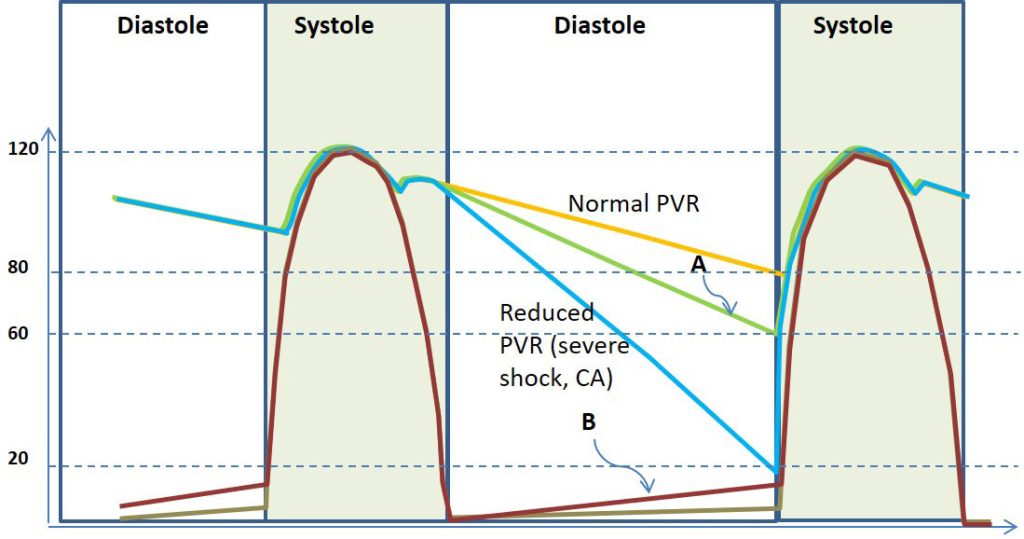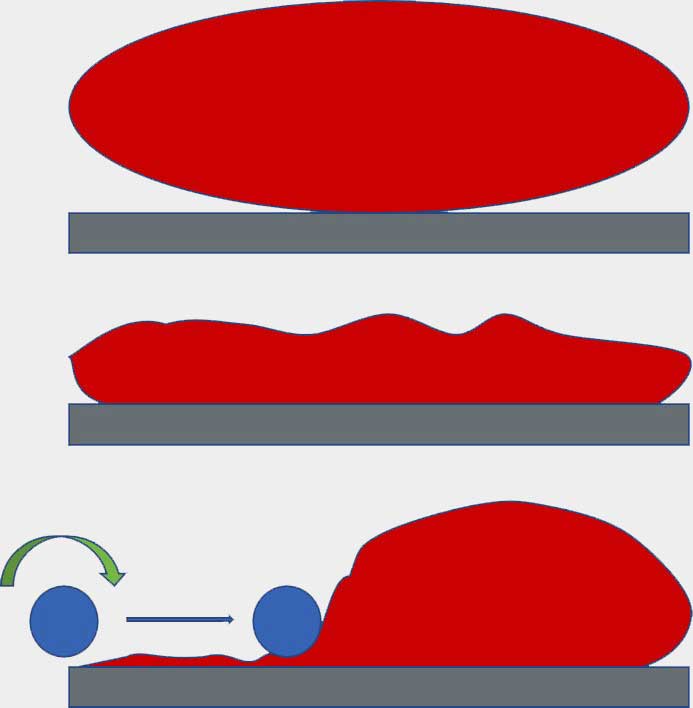HemaShock® Physiology
Exsanguination – Tourniquet
Auto Transfusion Tourniquet – HemaShock®
By OHK Medical Devices combines two functions:
- Displacement of blood from the limbs to the central circulation (exsanguination)
- Blocking arterial blood flow into the limb (tourniquet)

HemaShock® brings the patient’s own blood, with all of its clotting factors and intact oxygen-carrying capacity, into the essential organs, and prevents the heart from having to provide blood flow to the limbs.
Effects of HemaShock® on Left Ventricular & Arterial Pressures
The circulatory effects of the application of HemaShock® can be summarized by using the typical cardiac cycle diagram shown above.
In this diagram, the pressure inside the left ventricle axis is seen (in brown or gray) to increase rapidly at the beginning of the Systole peak and then fall to near zero pressure. During the Diastole, the ventricular pressure increases gradually as the ventricle fills with blood.
The pressure in the aorta and the large arteries follows the ventricular pressure, once the aortic valve opens and the rapid ejection starts.
The aortic pressure continues to follow the ventricular pressure until the aortic valve closes. In normal circulation, the aortic pressure falls gradually, as more and more blood is supplied to the organs and tissues during the Diastole (orange line in the diagram). The rate of diastolic pressure fall is influenced by the resistance of the arteries and arterioles that lead to the organs and tissues. This resistance is called Systemic Vascular Resistance – SVR. The rate of diastolic pressure fall is also dependent on the cardiac output. If the cardiac output is low, or when the SVR is reduced, as may happen in shock or during CPR, the pressure during Diastole falls much faster than normal, as shown by the light blue line.
SUMMARY
The overall physiological effects of applying HemaShock® on a patient are:
- Increased Venous Return to the heart
- Increased Stroke Volume
Resulting in:
- Increased systolic blood pressure
- Increased diastolic blood pressure
Increasing diastolic blood pressure increases the coronary arteries perfusion since the blood supply to the cardiac muscle is predominantly during diastole.
The use of HemaShock® also reduces the ratio of unstressed to stress vascular volume.
Changes in the Diagram When HemaShock® is Used
When HemaShock® is used it pushes blood from the limbs (legs usually) to the center.
This blood increases the venous return to the heart so the filling of the left ventricle is improved, and the ventricular filling pressure incline during Diastole is steeper (brown line marked B).
This increased ventricular filling increases the End-Diastolic Volume EDV of the ventricle, which, through the Frank-Starling mechanism, increases ventricular contractility, stroke volume, and cardiac output.
However, HemaShock® has a second effect:
it blocks the arterial flow into the limbs HemaShock® is placed on. This effect of HemaShock® impedes the flow out of the aorta to the limbs and has an immediate and direct effect on the SVR. Both effects (increased cardiac output and increased SVR) reduce the rate of fall of pressure in the aorta and main arteries during Diastole, as shown schematically in the green line marked A.

The Red Balloon Model of the HemaShock® Effect on the Unstressed/Stressed Volume Ratio
When both blood volume and vascular volume are normal, the circulatory pressure is maintained. This is depicted in the nicely stretched oval balloon in the top of the diagram on the left.
When blood volume falls (e.g. due to hemorrhage or dehydration) or the volume of the blood vessels becomes pathologically large (e.g. due to sepsis, anaphylaxis, or drugs), the pressure in the system falls and the balloon “sags.”
Rolling HemaShock® (symbolized by the blue roller) over one part of the system (e.g. legs), and squeezing its content (blood) into the other part of the system (e.g. the central circulation), increases the pressure and stretches the latter. This, in fact, reduces the ratio of the unstressed to stressed volume in this part of the circulation.
Physiology articles
Animal Model: Tourniquet Assisted CPR
A study evaluated the effectiveness of tourniquet assisted CPR in a porcine model (Figure). Thumper Cardiopulmonary Resuscitation was performed subsequent to inducing cardiac arrest in
